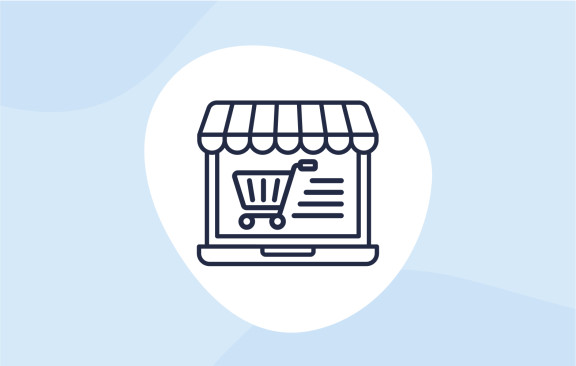The rise of eCommerce has transformed shopping habits across the United States, with online marketplaces dominating the retail landscape. These platforms offer unparalleled convenience, vast product selections, and competitive pricing, making them essential for both consumers and sellers.
This article explores the leading online marketplaces in the US, their defining features, and why they are critical to the modern digital economy.
What Are Online Marketplaces?
Online marketplaces are platforms where multiple vendors sell their products directly to consumers. Unlike traditional eCommerce stores, marketplaces serve as intermediaries, providing infrastructure for transactions, logistics, and customer support.
Key features of leading online marketplaces:
- Wide Product Selection: A diverse range of goods across multiple categories.
- Trust and Security: Buyer protection, verified reviews, and secure payments.
- Ease of Use: User-friendly interfaces for seamless shopping.
The Top Five Online Marketplaces in the US
1. Amazon

Amazon remains the largest and most influential marketplace in the US, generating a gross merchandise value (GMV) of $400 billion. Known for its vast product variety and innovative technology, Amazon continues to lead both domestically and globally.
Why Amazon Leads:
- Unmatched Product Range: From groceries to electronics, Amazon offers an extensive selection.
- Prime Membership Perks: Over 220 million Prime members globally benefit from free one-day shipping, exclusive deals, and streaming services.
- Technological Innovations: AI-powered recommendations, Alexa integration, and drone deliveries enhance the shopping experience.
- Consumer Trust: Nearly 91% of US shoppers trust Amazon, making it their first choice for online purchases.
2. eBay
eBay continues to thrive, with a GMV of $78 billion. It remains a popular platform for unique and secondhand items, offering both auction-style and fixed-price listings.
What Makes eBay Unique:
- Auction Model: Sellers can attract competitive bids for rare or collectible items.
- Niche Appeal: A go-to destination for vintage goods, refurbished electronics, and collectibles.
- Active User Base: Monthly, 3.9 million US consumers use the eBay app, showcasing its enduring relevance.
3. Walmart Marketplace

Walmart has successfully combined its extensive brick-and-mortar presence with its digital marketplace, achieving a GMV of $37 billion. Its integration of online and in-store shopping offers a seamless experience for customers.
Why Walmart Thrives:
- Omnichannel Excellence: Customers can shop online and pick up orders in-store, blending convenience and accessibility.
- Affordable Prices: Walmart’s reputation for low prices attracts cost-conscious shoppers.
- Strong Brand Loyalty: Its trusted reputation bolsters marketplace growth.
4. OfferUp
OfferUp has gained traction as a key platform for peer-to-peer sales, generating a GMV of $35 billion. Often compared to a modern Craigslist, OfferUp focuses on community-based transactions.
Key Features of OfferUp:
- Local Sales Emphasis: Location-specific listings make it easy to buy and sell within communities.
- Mobile-First Design: The app’s simplicity appeals to younger, tech-savvy users.
- Safety Features: TruYou verification ensures secure interactions between buyers and sellers.
5. Etsy

Etsy has become a favorite for artisans and small businesses, boasting a GMV of $16 billion. It specializes in handmade, vintage, and personalized goods, appealing to environmentally conscious shoppers.
Why Etsy Stands Out:
- Unique Offerings: Focus on creativity and sustainability attracts a loyal audience.
- Support for Small Businesses: Tools for branding, marketing, and analytics empower sellers.
- Global Appeal: Etsy’s marketplace draws buyers seeking custom or one-of-a-kind items.
Honorable Mentions: Rising Stars in the Market
Facebook Marketplace
Facebook Marketplace remains a popular choice for local transactions, leveraging its massive user base and integration with social features.
Target Plus
Target’s exclusive, invitation-only marketplace offers high-quality items, gaining traction among loyal Target customers.
Wayfair
Specializing in furniture and home goods, Wayfair stands out with its use of augmented reality (AR) for better product visualization.
Houzz
Houzz continues to serve as a niche platform for home improvement and design, appealing to both professionals and DIY enthusiasts.
Trends Shaping Online Marketplaces
Mobile Shopping Dominance
Smartphones now account for over 60% of eCommerce traffic, making mobile optimization a top priority for online platforms.
Social Commerce Integration
Platforms like TikTok and Instagram are seamlessly merging shopping with entertainment, making social commerce a significant growth area.
AI-Powered Personalization
Marketplaces use AI to provide personalized recommendations, dynamic pricing, and predictive analytics to enhance customer engagement.
Sustainability Focus
Consumers increasingly favor marketplaces offering carbon-neutral shipping, eco-friendly packaging, and ethically sourced products.
Subscription Models
Programs like Amazon Prime and Walmart+ continue to grow, providing exclusive benefits that enhance customer loyalty.
Choosing the Right Marketplace for Your Business
For sellers, selecting the ideal marketplace depends on the product type, target audience, and business objectives. Here’s a quick comparison:
Marketplace |
Best For |
|---|---|
| Amazon | General products, high sales volume |
| eBay | Unique, collectible, and secondhand items |
| Walmart | Competitive pricing, fast-moving consumer goods |
| OfferUp | Local and peer-to-peer sales |
| Etsy | Handmade, vintage, and sustainable products |
| Local and casual transactions | |
| Wayfair | Furniture and home décor |
Future Outlook: The Evolution of Marketplaces
As technology and consumer preferences evolve, online marketplaces are likely to undergo significant changes. Here’s what to expect:
- Wider Adoption of Augmented Reality (AR): AR will enable customers to visualize products in their homes, from furniture to fashion.
- Voice Commerce Expansion: More shoppers will use smart assistants for purchases, driving the growth of voice-enabled shopping.
- Globalization: Marketplaces will continue to cater to international audiences with localized shipping and payment options.
- Hyper-Personalization: Advanced AI will tailor the shopping experience to individual preferences, increasing customer satisfaction.
Online marketplaces have reshaped the retail landscape, offering consumers convenience and variety while empowering businesses to reach broader audiences. Platforms like Amazon, eBay, and Walmart lead the market, while specialized marketplaces like Etsy and OfferUp serve niche audiences. Understanding these platforms’ strengths and trends can help businesses thrive in this competitive space.













